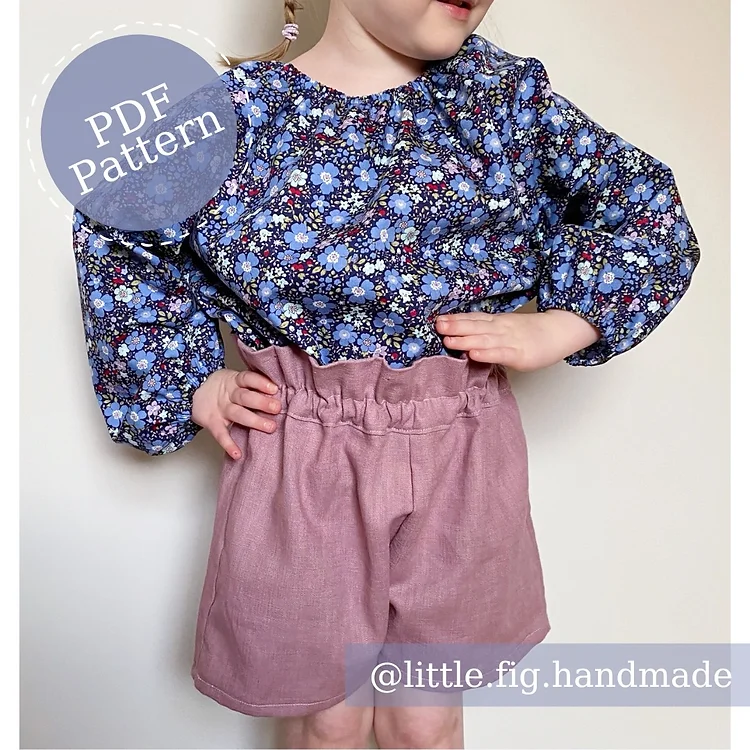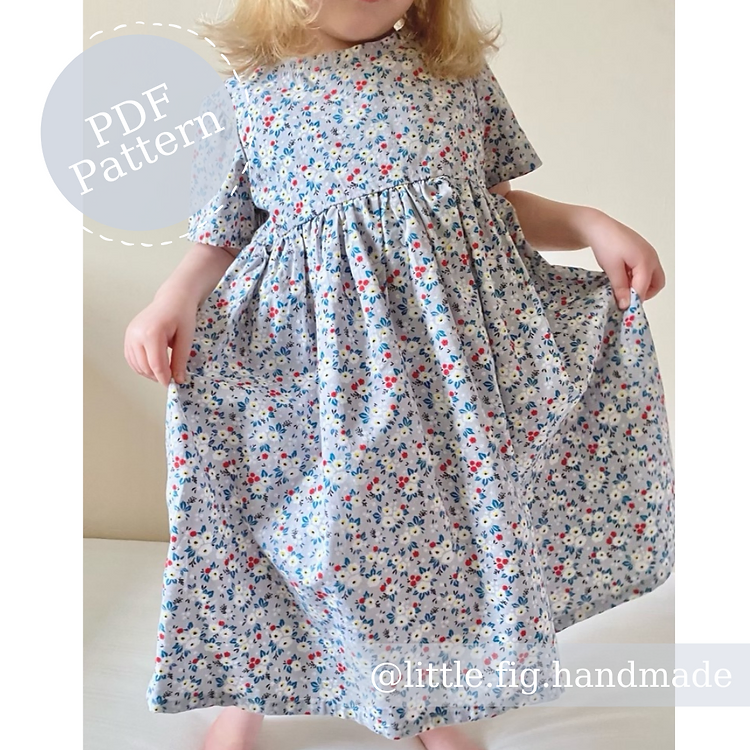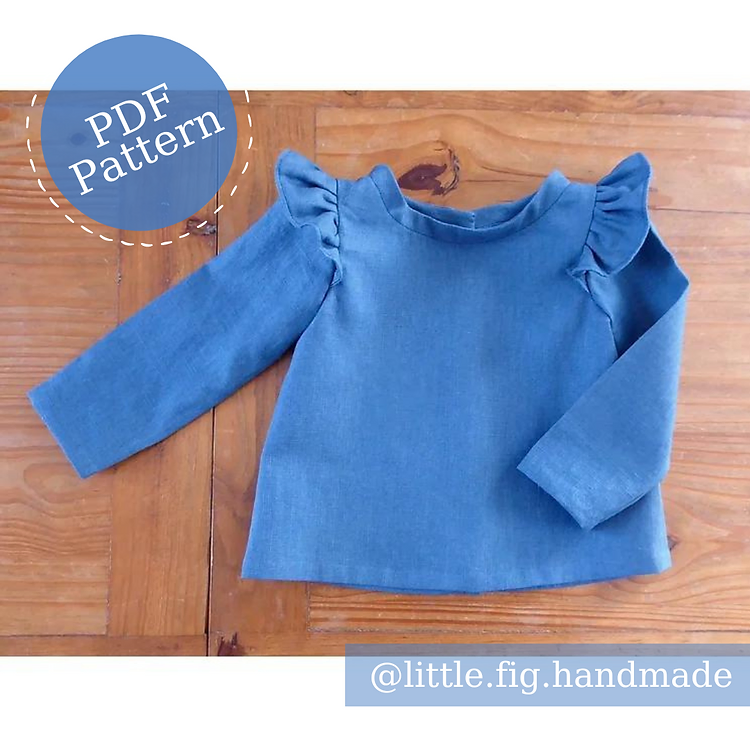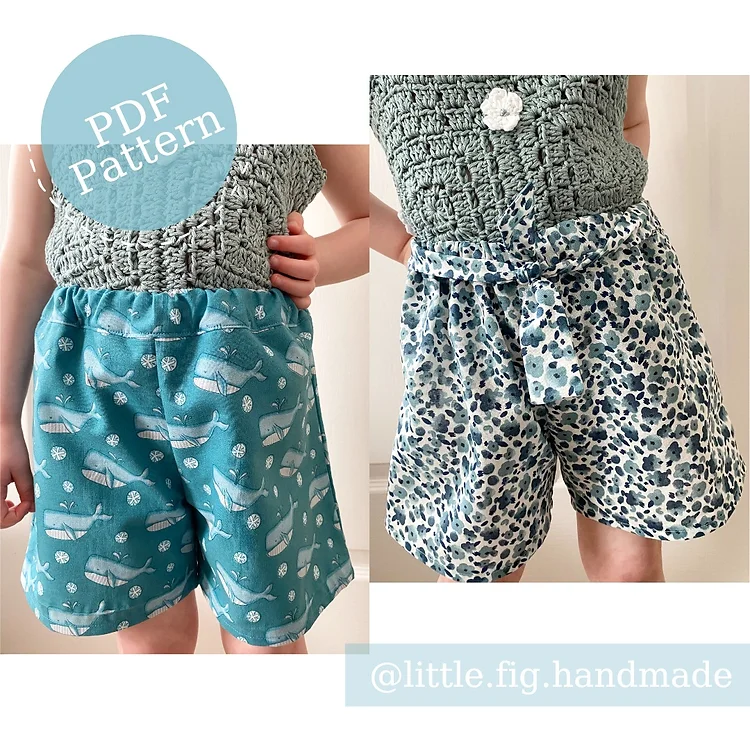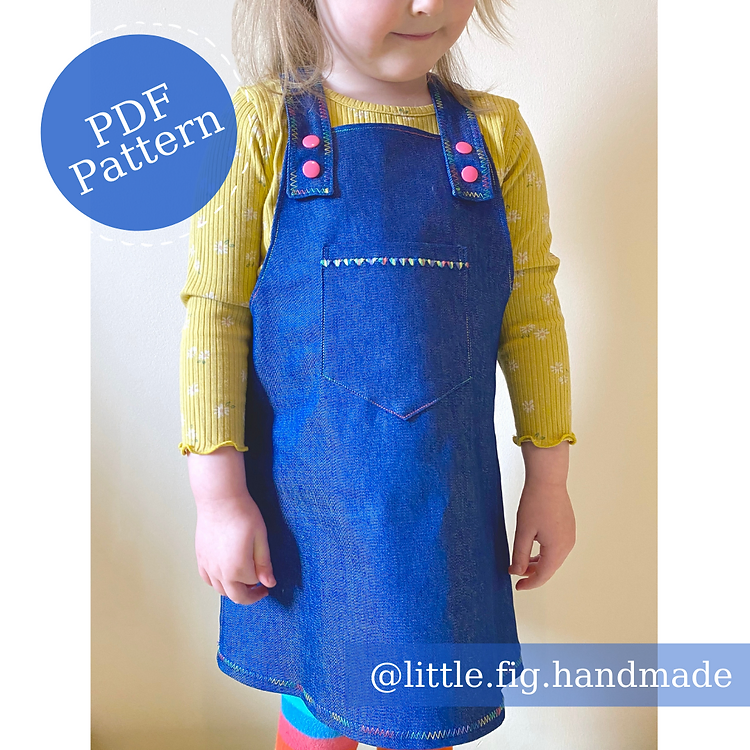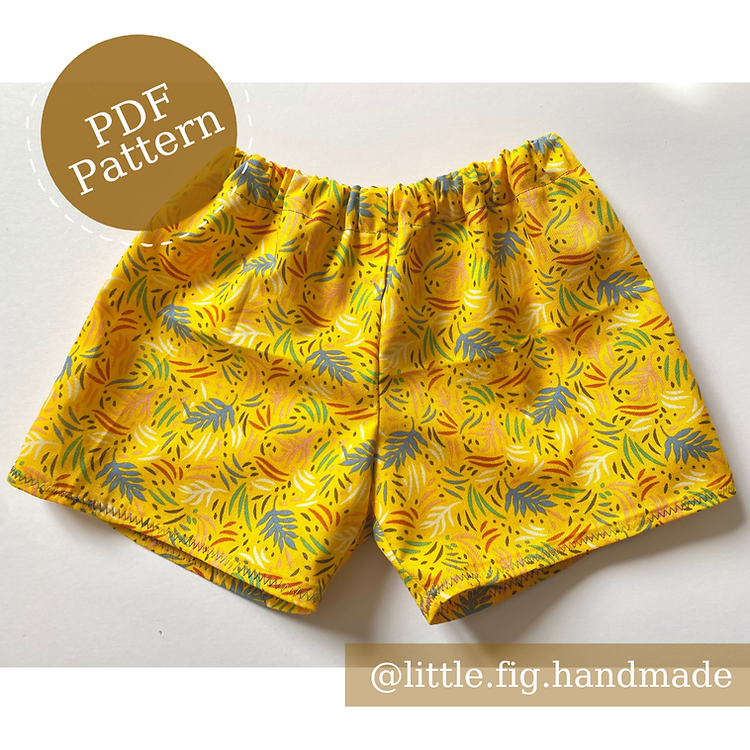The Ultimate Guide to Linen Fabric
- LittleFigHandmade
- Mar 13, 2024
- 7 min read
Linen is one of my favourite fabrics to work with - it holds its shape well, but creates comfortable, cool garments that can be dressed up or down. Children's clothes made from Linen are ready for all the rough and tumble of play, and I've had the pleasure of making some rather fantastic skirts and dresses that are full of volume for little ones to wear to events.
This Ultimate Guide to Linen Fabric is designed to help you feel confident when choosing Linen to sew with, and maybe find out some things you didn't know about Linen fabric and its blends.

Linen is made from the fibres of the Flax plant, that is most commonly grown in Europe. After the Flax plant is cut, the stem is soaked to remove the soft parts of the stem, exposing the tough fibres. These are then woven into fabric. There have been some Egyptian Linen fibres dated back to 4,500BC, but it is not accurately known when it was first developed – however it is said to be one of the oldest cellulosic (made from cellulose) fibres.
Linen is characterized by its slubbed, raised texture, giving a natural and earthy feel. Some other fabrics may be described as a ‘Linen Look’ fabric if they have similar properties. Linen blends and 100% Linen fabrics can have very different properties depending on the percentages of the fibres in the fabric.
Benefits of Linen
· Keeps you cool
· Strong
· Durable – it can last a lifetime!
· Gets better looking and handles better with each wash
· Available in a variety of weights, blends and colours
· Has a natural lustre
· Moth resistant
· Resistant to the alkalis in detergents
· Quick drying
· Lint free
· Sheds surface dirt
· Resists stains
· Good shape retention – strong when dry but even stronger when wet!
· Isn’t damaged by direct sunlight
· Sustainable to produce
· Wicks sweat away from the body
· Said to have a light massaging effect on skin making it comfortable to wear
Disadvantages of Linen
· It wrinkles easily
· Can yellow with age
· Frays on seams
· Some 100% Linen fabrics are too stiff for dressmaking

Types of Linen
There are many different types and blends of Linen Fabric – here are a few you are likely to encounter when fabric shopping, and some of their characteristics to look out for…
Lightweight Linen
· Can be so lightweight that it is almost transparent, or see through when used for a garment
· Slubbed with a smoother surface than Enzyme Washed Linen
· Not always pre-treated
· 100% Linen
Great to make; tops, blouses, some dresses (items will likely need lining)
Sorona Linen (Light to Medium Weight)
· A Linen blend – 45% Linen 22% Viscose 18% Sorona 15% Cotton
· This is a semi man-made fibre which relies on a 35% plant base
· It takes less energy to produce than other man-made fibres
· Offers stretch and recovery without the need for the fibre to be blended with Spandex or Elastane
· It is more resistant than 100% Linen to wrinkling and creasing
· Textured like 100% Linen
· Drapey with good handle
· Opaque
Great to make; tops, blouses, dresses, skirts, trousers, jumpsuits
Viscose Linen (Light to Medium Weight)
· A Linen Blend – 75% Viscose 25% Linen (this can vary)
· Textured slub finish
· Opaque
· Drapey with good handle
Great to make; shirts, blouses, tops, dresses, jumpsuits, trousers, skirts
Cotton Linen (Light to Medium Weight)
· Comes in varying blends that can affect the weight
· Holds shape well
· Structured but not stiff
· Textured slub finish
Great to make; tops, blouses, shirts, skirts, loose dresses

Enzyme Washed Linen (Medium Weight)
· Pre washed with enzymes, which softens the fibres in a less harsh and more environementally friendly way than chemicals might
· Textured slub finish
· 100% Linen
· Slightly structured, perfect for ‘boxy’ garments
Great to make; trousers, jumpsuits, overalls, dungarees, skirts, lightweight jackets, blazers, tops and dresses
Ramie (Medium to Heavy Weight)
Ramie is not a Linen fabric, however it has very similar properties and production process, so will likely be listed with Linen fabrics for sale – which is why we have included it here!
· Like Linen, but made from the stem of a Nettle Plant (China Grass)
· Slubbed texture, but more prominent than Linen
· Thicker and more structured than 100% Linen – but not stiff
· Opaque
· Good for boxy, structured garments
Great to make; trousers, jumpsuits, dungarees, overalls, shorts, jackets, blazers
Things to Consider When Choosing Linen
Linen fibres will relax and react to natural body heat, so it is important to understand how this will influence the final fit of your garment. The most affected areas of the body with regards to fit are; the neckline, waistline, shoulder seams, seat (bottom!) area and the knees. These are areas that have an increase amount of movement and so will put more strain on the fibres, resulting in baggy knees or a pulling neckline. Some solutions to these fit issues can include;
· Using tape on the shoulder seams to maintain shaping
· Bias binding or stay stitching the neckline to avoid pulling or stretching
· Line the sleeves or seat of a garment to reduce the impact on these areas
Cutting Linen
Linen does not have a nap, and so there is no need to consider the ‘direction’ of the fabric when cutting out. This is of course unless you are using a directional or patterned printed Linen, which would need some consideration to make the most out of the pattern or to pattern match. Extra fabric will likely be required to pattern match or for directional prints.
The best tools for cutting Linen is a sharp pair of fabric scissors or a rotary cutter – it can be prone to fraying, especially lighter weight Linens, so a clean cut edge with reduce this.

Needles to use with Linen
Either a 80/12 or a 90/14 Universal Machine Needle is suitable for use when sewing Linen fabrics. It can vary depending on the weight of the Linen, so consult your sewing machine instructions if you are working with a particularly Light or Heavyweight Linen. Replacing your machine needle before a new project is also recommended - but we know how easy it can be to forget this!
For hand sewing, a sharp, fine needle is best.
Threads to use with Linen
The best thread to use with Linen is an ‘all purpose’ Polyester thread, as this is strong and helps the seams keep their shape.
Finishing Linen Seams
As Linen Is so prone to fraying once cut, you will need to finish the seams of your project if you do not want it to unravel! If you do not have an overlocker, you can zig-zag stitch along the seams, although this may be prone to fraying still and look messy. Seams may be bound for a neater finish without an overlocker. The best option is a 3 or 4 thread overlocked edge.
Machine Settings for Sewing Linen
When sewing Linen, it can be beneficial to shorten your stitch length slightly, as again this stabilizes the stitch line. A stitch length of 2.0mm – 2.5mm is recommended, with a looser tension of 4/5. This will vary depending on your machine, so it can be helpful to do a test swatch with these settings and adjusting appropriately.
Linen Garment Aftercare
Washing
The best way to wash your Linen Garments is on a cool machine wash with a mild detergent. If your garment is being washed with other items, you may want to pop it in a mesh bag to avoid snags. While Linen is fairly hardy, it can show up damage more prominently and also can snag more easily if it is a loosely woven type.
Avoid using too much detergent or product as this can create a sticky film over your fabric. Some people even suggest to avoid using fabric softener as the Linen will soften with each wash regardless.
Try not to wash your garment after every wear – this will help your item last even longer. If there is light markings or dirt, spot clean this with a damp cloth where possible.
If you have stubborn stains, it can be best to hand wash and pre-treat your garment, agitating the stain with a soft toothbrush, before hand or machine washing. Be sure to use a detergent that you would usually use on your Linen garments.

Drying
It is always best to air dry Linen garments. Not only will this make your item last longer, but it will also prevent shrinkage that occurs at high heat.
If you must use a tumble dryer, use a low heat, short setting and remove your garment as soon as it is dry. Some dryers have a Linen setting.
Pressing
A steamer is invaluable when you have Linen garments – the pure satisfaction when you can just steam away all the wrinkles! Ironing with lots of steam is fine too, but for a quick and easy refresh, steaming whilst hanging is the best option. This also prevents any scorching or melting to the surface of the garment, which causes it to lose its lustre – this can happen especially if the Linen is pre-treated.
Storing
The best way to store your Linen garments is to hang them, ideally on a padded hanger, to maximise airflow and prevent further wrinkles. The padded hanger will also reduce stretch around your shoulders and neckline. If folding or storing your garments away for the season, fold neatly and store in Cotton or other breathable containers or bags, to avoid the material becoming damp or sweating – this can lead to mildew.
Patterns perfect for Linen...
We hope you found this guide helpful - Happy sewing!
-Charis x









